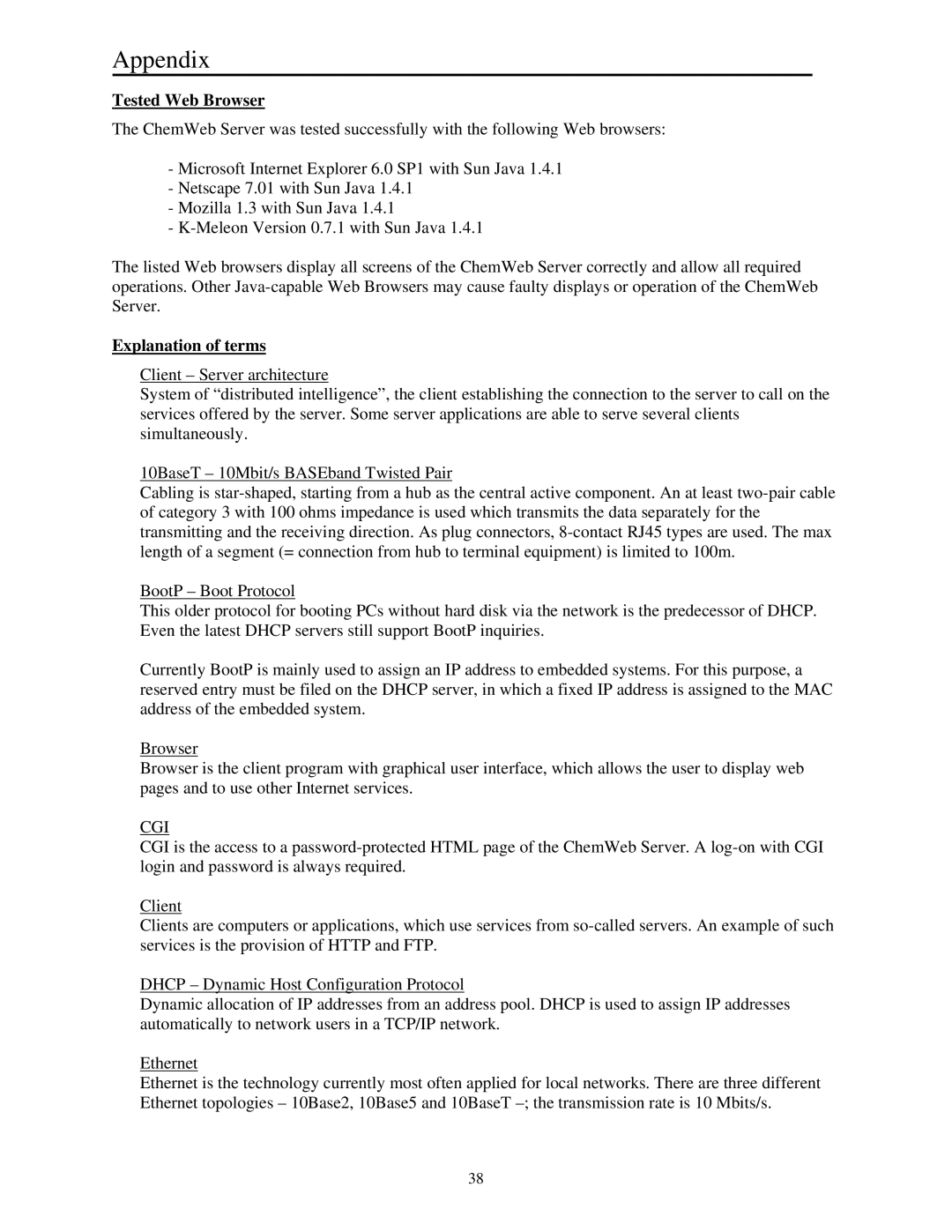Appendix
Tested Web Browser
The ChemWeb Server was tested successfully with the following Web browsers:
-Microsoft Internet Explorer 6.0 SP1 with Sun Java 1.4.1
-Netscape 7.01 with Sun Java 1.4.1
-Mozilla 1.3 with Sun Java 1.4.1
-
The listed Web browsers display all screens of the ChemWeb Server correctly and allow all required operations. Other
Explanation of terms
Client – Server architecture
System of “distributed intelligence”, the client establishing the connection to the server to call on the services offered by the server. Some server applications are able to serve several clients simultaneously.
10BaseT – 10Mbit/s BASEband Twisted Pair
Cabling is
BootP – Boot Protocol
This older protocol for booting PCs without hard disk via the network is the predecessor of DHCP. Even the latest DHCP servers still support BootP inquiries.
Currently BootP is mainly used to assign an IP address to embedded systems. For this purpose, a reserved entry must be filed on the DHCP server, in which a fixed IP address is assigned to the MAC address of the embedded system.
Browser
Browser is the client program with graphical user interface, which allows the user to display web pages and to use other Internet services.
CGI
CGI is the access to a
Client
Clients are computers or applications, which use services from
DHCP – Dynamic Host Configuration Protocol
Dynamic allocation of IP addresses from an address pool. DHCP is used to assign IP addresses automatically to network users in a TCP/IP network.
Ethernet
Ethernet is the technology currently most often applied for local networks. There are three different Ethernet topologies – 10Base2, 10Base5 and 10BaseT
38
